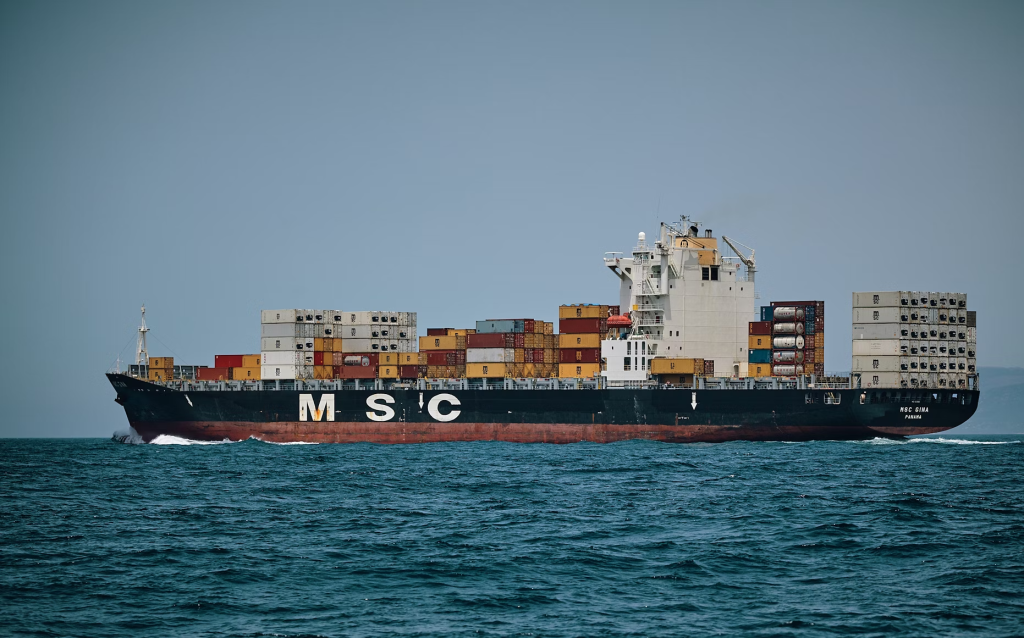The freight industry plays a pivotal role in the global economy, serving as the backbone of commerce by ensuring goods are transported efficiently from manufacturers to consumers.

Whether you’re a business owner, a logistics professional, or simply curious about how products reach store shelves, understanding the intricacies of freight can provide valuable insights into the mechanisms driving global trade.
In this article, we will explore how freight works, the different modes of freight transportation, and the challenges the industry faces today.
How Does Freight Work?
Freight refers to transporting goods in bulk from one location to another, whether domestically or internationally. The process involves several stages, each critical to ensuring that products reach their destinations safely and on time.
Shipping Initiation
The freight process begins when a shipper, usually a manufacturer or supplier, identifies the need to transport goods. This can range from raw materials destined for factories to finished products heading to retail outlets.
At this stage, the shipper provides key details about the shipment, including the type of goods, weight and dimensions, the origin, and the destination.
Choosing The Freight Mode
Depending on the nature of the goods, distance, and urgency, shippers select the appropriate mode of transportation, see it here:
- Road Freight: Ideal for short to medium distances, road freight uses trucks to move goods. It’s highly flexible and suitable for door-to-door delivery.
- Rail Freight: Often used for heavy and bulk goods over long distances, rail is cost-effective but less flexible than road transport.
- Air Freight: The fastest mode, air freight is preferred for high-value or perishable goods but comes with higher costs.
- Sea Freight: Suitable for large quantities of goods, sea freight is the most economical choice for international shipping, albeit slower than air transport.
- Intermodal Freight: Combines multiple modes of transport to optimize costs and delivery times.
Freight Documentation
Proper documentation is crucial for the smooth movement of goods. Common documents include the bill of lading, commercial invoice, packing list, and, in the case of international shipments, customs declarations. These documents ensure compliance with legal requirements and provide essential details for tracking and accountability.
Freight Handling And Transportation
Once the freight is loaded, it undergoes handling procedures to ensure safe transit. This includes packaging, palletizing, and securing goods to prevent damage. During transportation, tracking technologies like GPS and RFID are often used to monitor the shipment’s progress.
Delivery And Final Mile Logistics
The final stage involves delivering goods to their destination. In the case of business-to-business (B2B) transactions, this might mean delivery to a warehouse or distribution centre. For business-to-consumer (B2C) shipments, the goods are delivered directly to the customer’s address.
Efficient final-mile delivery is increasingly critical as e-commerce grows. Companies now prioritize quick, accurate delivery to meet customer expectations, leveraging advanced logistics strategies and technology to streamline the process.
Modes Of Freight Transportation
The freight industry offers various transportation modes, each with its advantages and limitations. Choosing the right mode depends on factors like the type of goods, delivery timeline, and budget.
Road Freight
Road freight is the most versatile and commonly used mode of transportation. It offers door-to-door service, making it ideal for last-mile delivery. Trucks can transport a wide range of goods, from food products to industrial machinery. However, road freight can be affected by traffic congestion, road conditions, and driver shortages.
The growing popularity of electric and autonomous trucks is transforming road freight. These innovations promise to reduce emissions and increase efficiency, marking a significant step toward sustainability.
Rail Freight
Rail transport is particularly effective for moving large volumes of goods over long distances. It’s more environmentally friendly than road freight, with lower greenhouse gas emissions. However, it requires access to rail networks and is less flexible in terms of delivery points.
Advances in rail technology, such as high-speed freight trains and automated systems, are improving the reliability and speed of rail freight, making it a more competitive option for certain industries.
Air Freight
Air transport is unmatched in speed, making it the best choice for urgent or high-value shipments. It’s commonly used for electronics, pharmaceuticals, and perishable goods. The main drawbacks are high costs and limited capacity for large or heavy items.
Despite its expense, air freight is experiencing growth due to the increasing demand for rapid delivery in sectors like e-commerce and healthcare. Companies are also exploring sustainable aviation fuels to address environmental concerns.
Sea Freight
Sea transport is the cornerstone of international trade, handling over 80% of global goods. It’s cost-efficient for transporting large shipments but significantly slower than air freight. Sea freight is ideal for bulky, non-urgent goods like industrial equipment and raw materials.
The adoption of larger, more fuel-efficient ships and the implementation of digital technologies like blockchain for tracking are helping improve sea freight’s efficiency and transparency.
Intermodal Freight
Intermodal transportation combines two or more modes, such as rail and road or sea and air. This approach allows businesses to optimize efficiency and costs by leveraging the strengths of each mode. For instance, goods might travel by sea to a port and then by truck to their final destination.
Intermodal systems are becoming increasingly sophisticated, with advanced software solutions enabling seamless transitions between modes. This innovation reduces delays and enhances supply chain resilience.
Challenges Facing The Freight Industry
The freight industry is constantly evolving to meet the demands of a growing and interconnected global market. However, it also faces significant challenges that impact its efficiency and sustainability.
Infrastructure Limitations
Aging infrastructure, such as roads, bridges, and rail networks, can hinder the smooth flow of goods. In developing countries, inadequate infrastructure often leads to delays and increased transportation costs. Investments in modernization and maintenance are crucial to overcoming this challenge.
Public-private partnerships and government initiatives are essential for funding infrastructure projects that improve freight transportation networks.
Environmental Concerns
The freight industry is a major contributor to greenhouse gas emissions. As sustainability becomes a priority, companies are exploring eco-friendly solutions like electric vehicles, alternative fuels, and optimized route planning. However, transitioning to greener practices requires significant investment and technological advancements.
The adoption of carbon-neutral shipping methods and renewable energy sources is gaining momentum as the industry works toward meeting global sustainability goals.
Regulatory Compliance
Freight operations must adhere to a complex web of local, national, and international regulations. These include customs requirements, safety standards, and environmental policies. Non-compliance can result in fines, delays, and reputational damage.
Staying ahead of regulatory changes requires constant monitoring and investment in compliance management tools and personnel training.
Labour Shortages
The industry faces a growing shortage of skilled labor, particularly truck drivers. Factors like long working hours, aging workforce, and competition from other industries exacerbate the problem. Addressing this requires improved working conditions, training programs, and competitive wages.
Automation and robotics, including autonomous vehicles and warehouse systems, are being explored to alleviate labour shortages and enhance productivity.
Technological Disruptions
While technology offers opportunities for innovation, it also brings challenges. Cybersecurity threats, integration of new systems, and the need for continuous upgrades can strain resources. Businesses must strike a balance between leveraging technology and managing associated risks.
Blockchain, artificial intelligence, and IoT are revolutionizing supply chain management, but their successful integration demands strategic planning and robust cybersecurity measures.
Conclusion
The freight industry is a complex and dynamic sector that plays a critical role in the global economy. By understanding how freight works, the modes of transportation available, and the challenges the industry faces, businesses and consumers alike can appreciate the intricate processes that bring goods to their doorsteps.
As the industry continues to evolve, it must navigate a rapidly changing landscape marked by technological advancements, environmental concerns, and shifting consumer demands.
Collaboration between industry stakeholders, investment in sustainable practices, and the adoption of innovative technologies will be key to overcoming challenges and ensuring the freight sector’s long-term success. With strategic planning and innovative solutions, the freight sector is poised to remain a cornerstone of global commerce for years to come.
